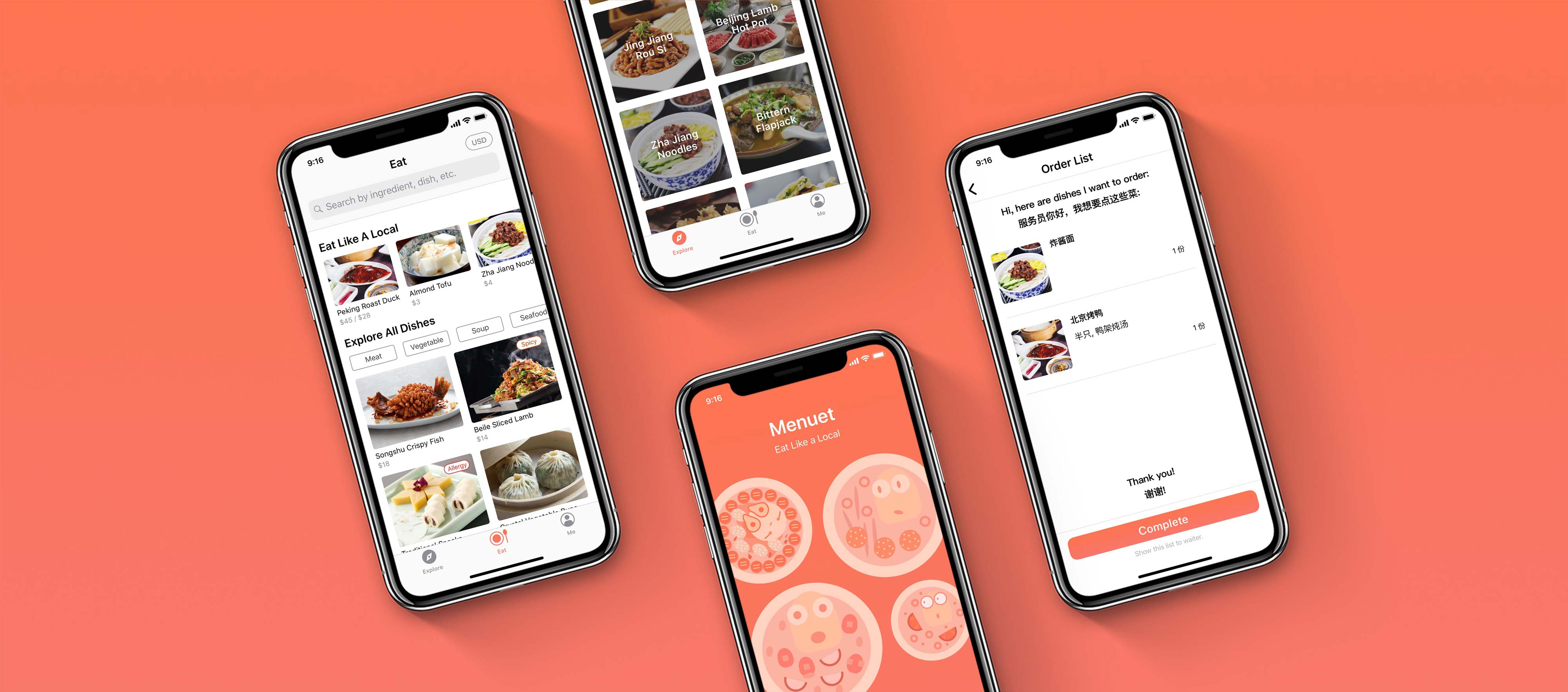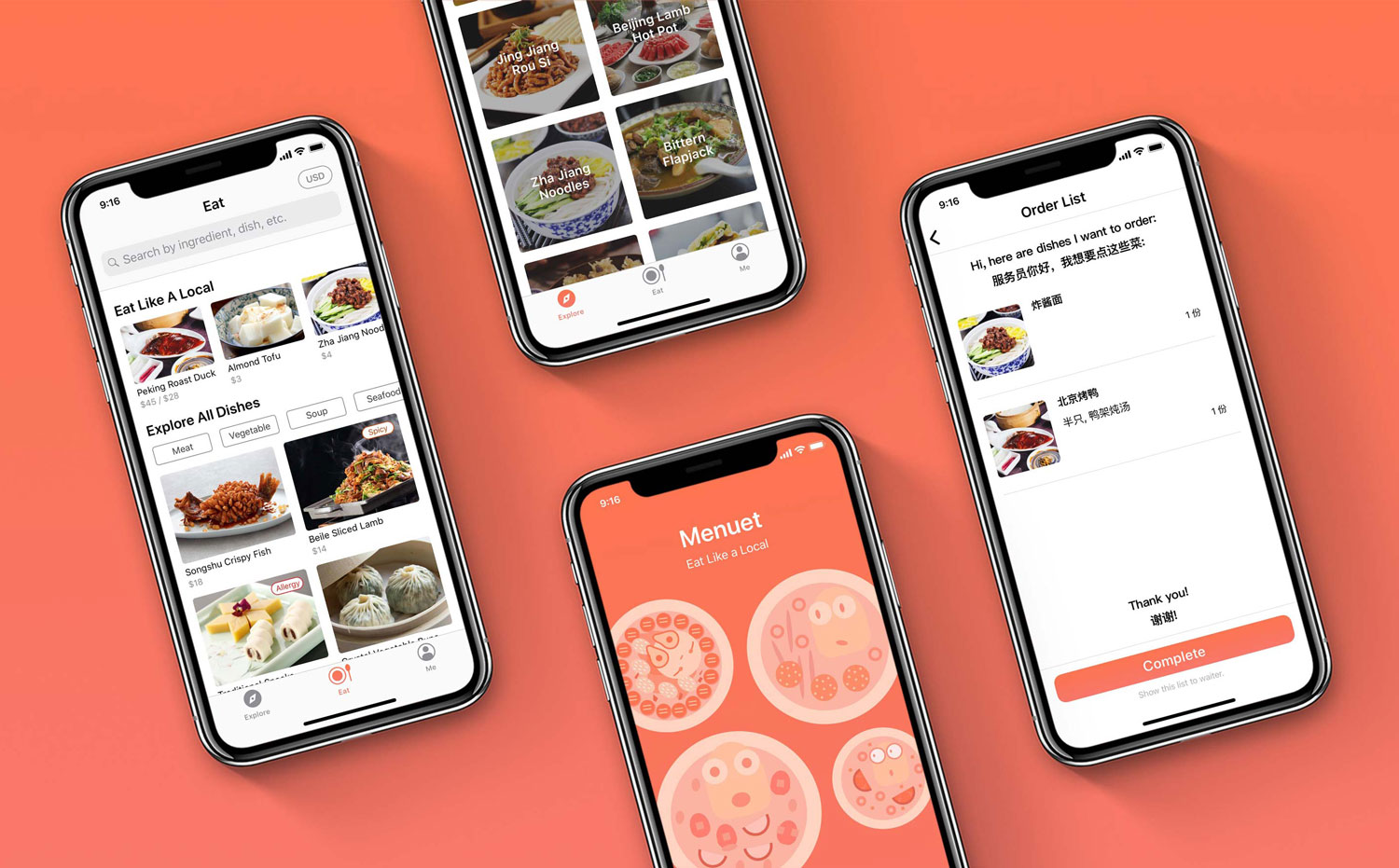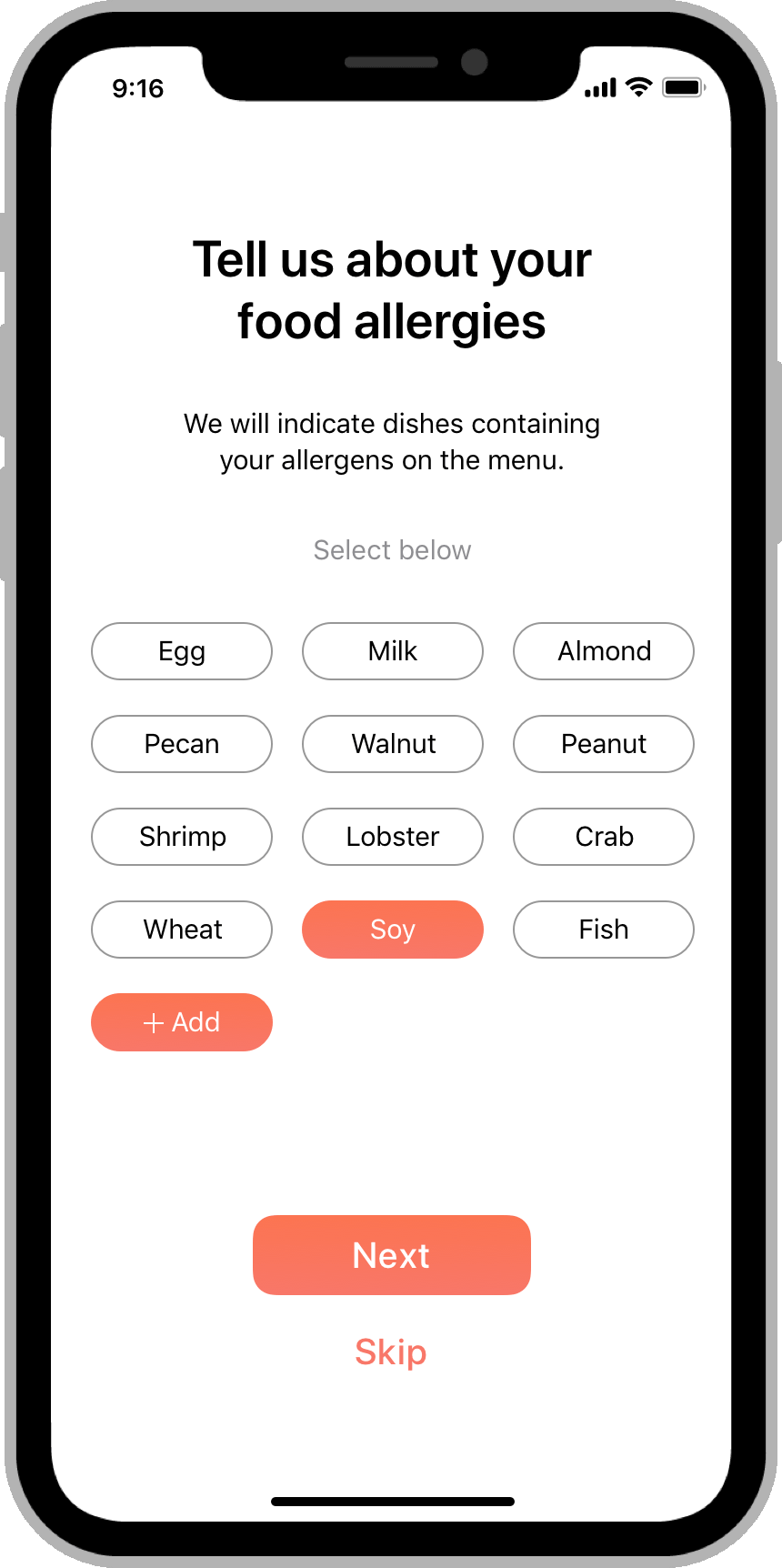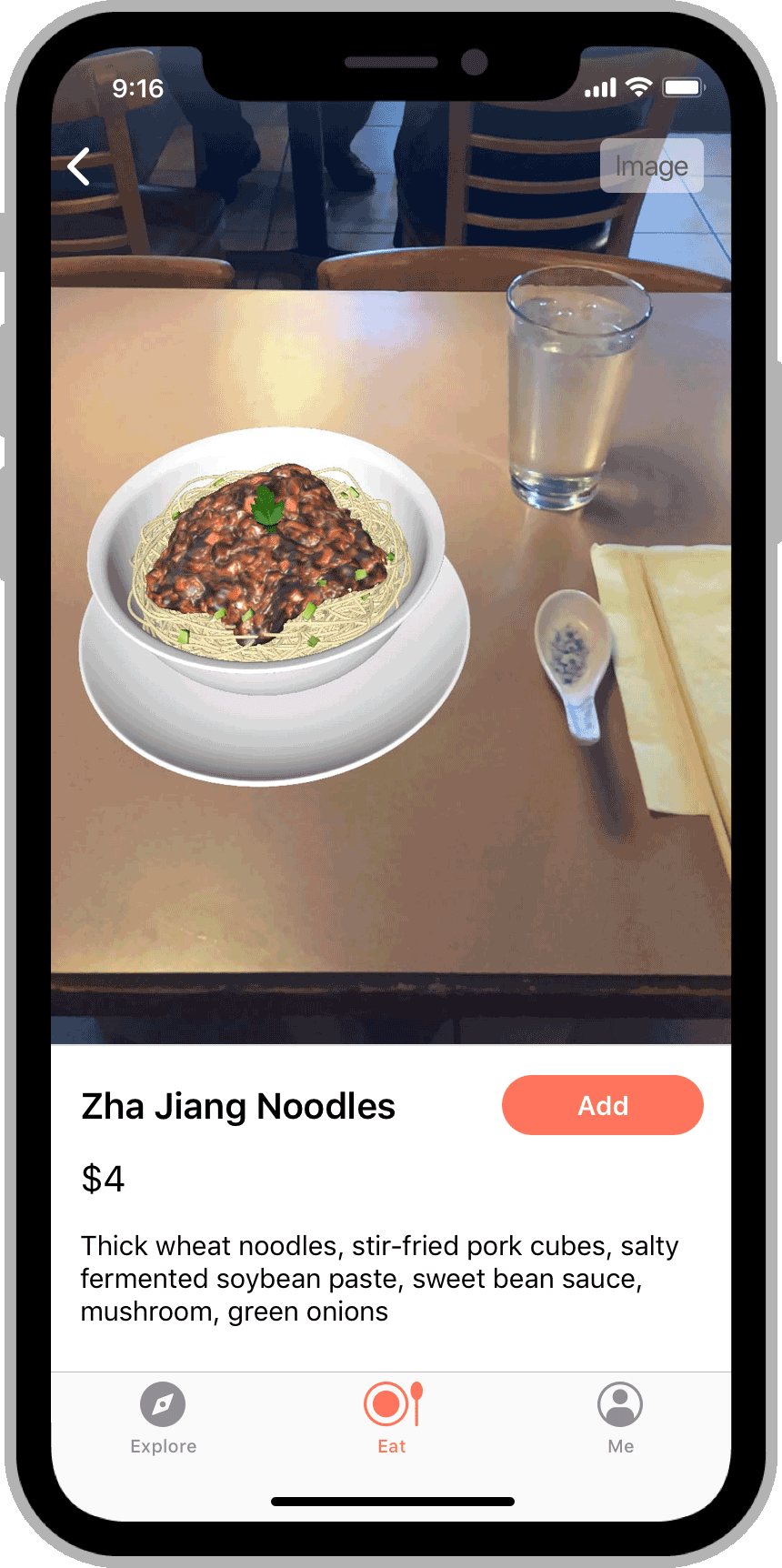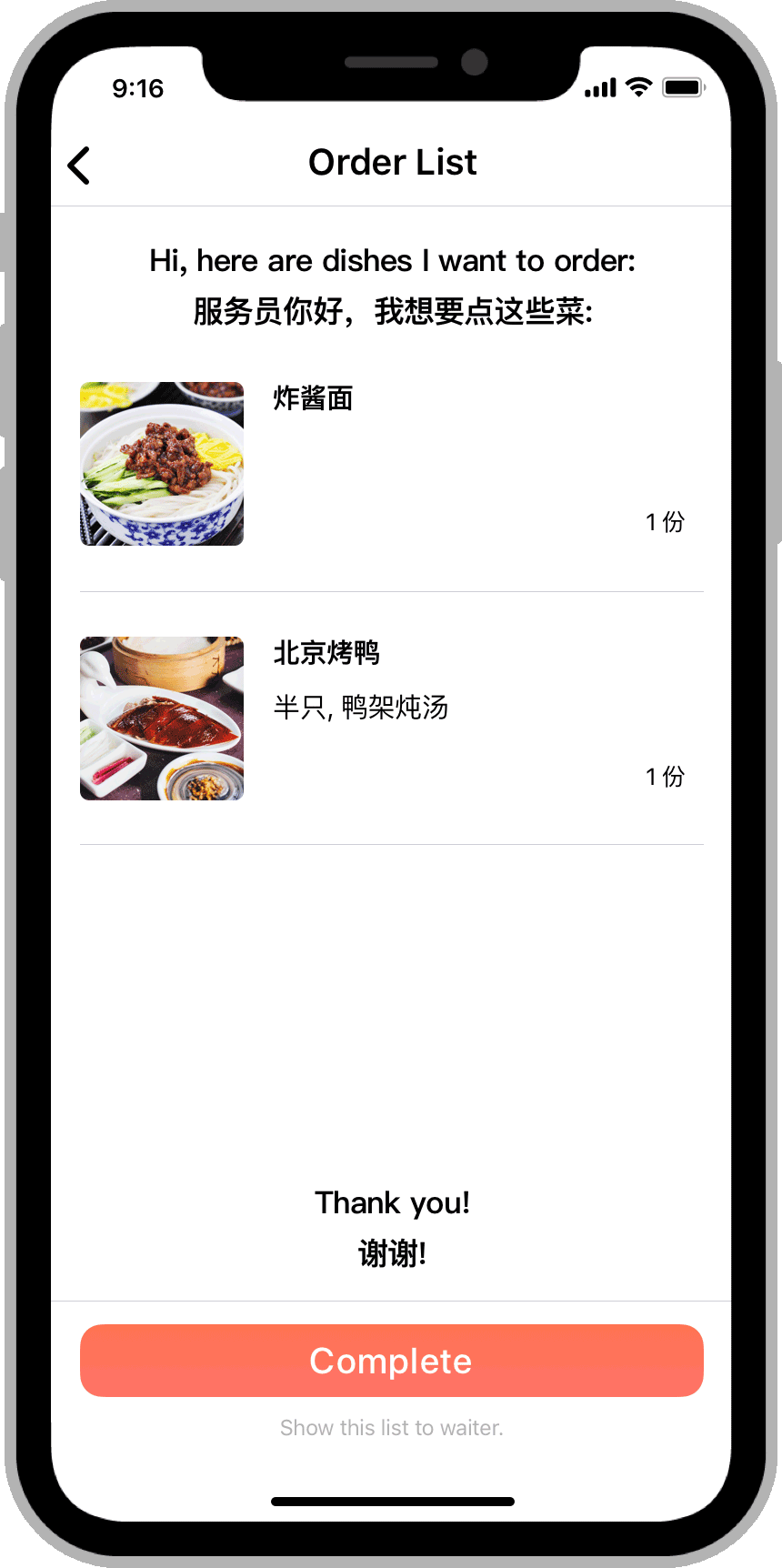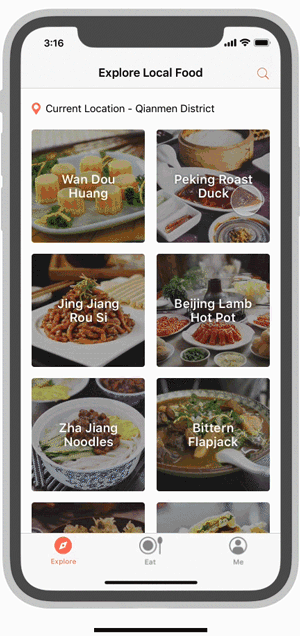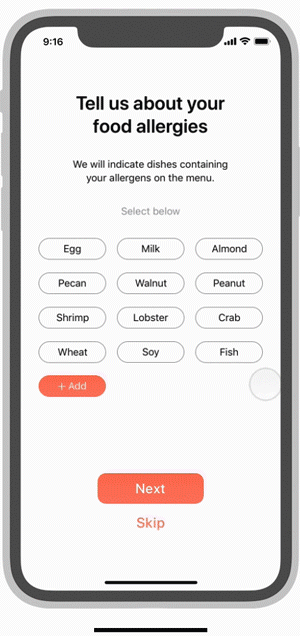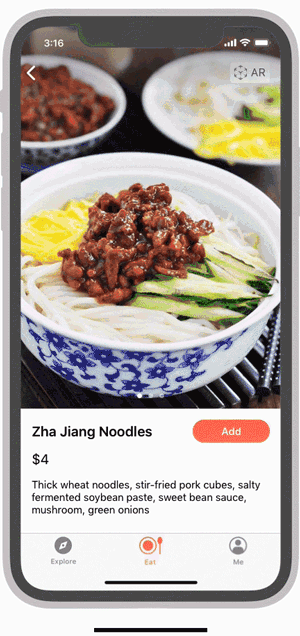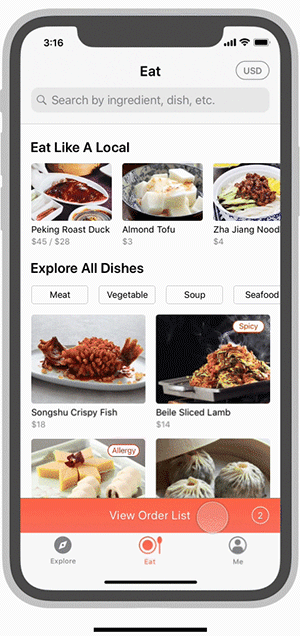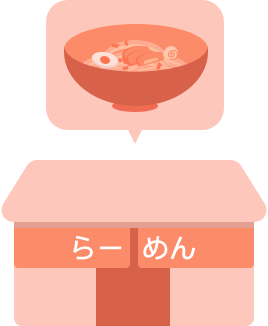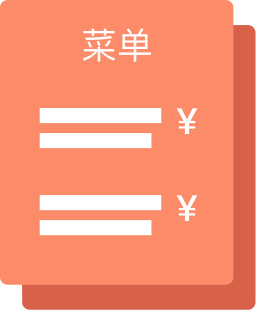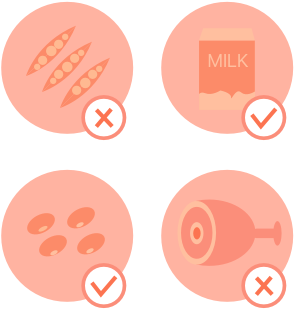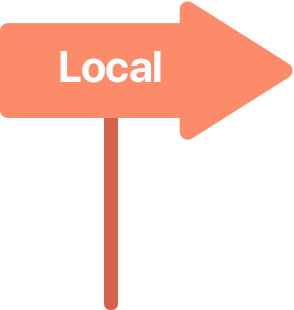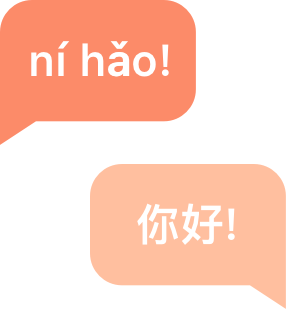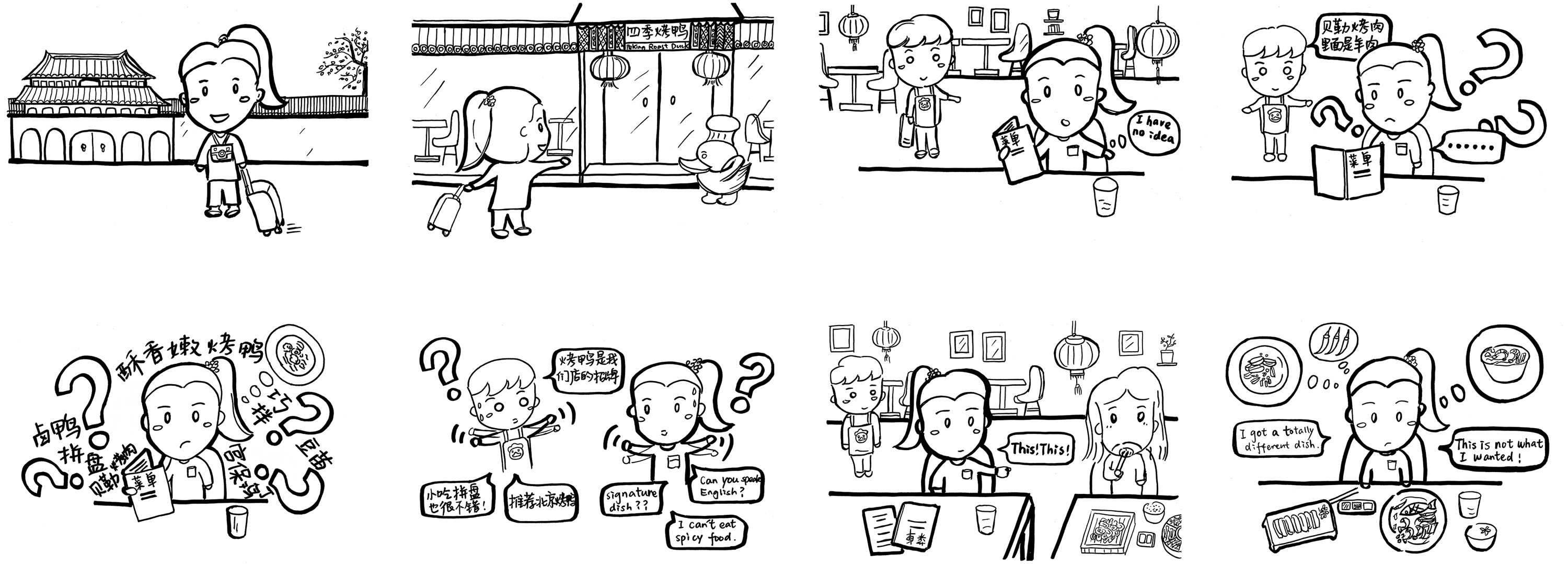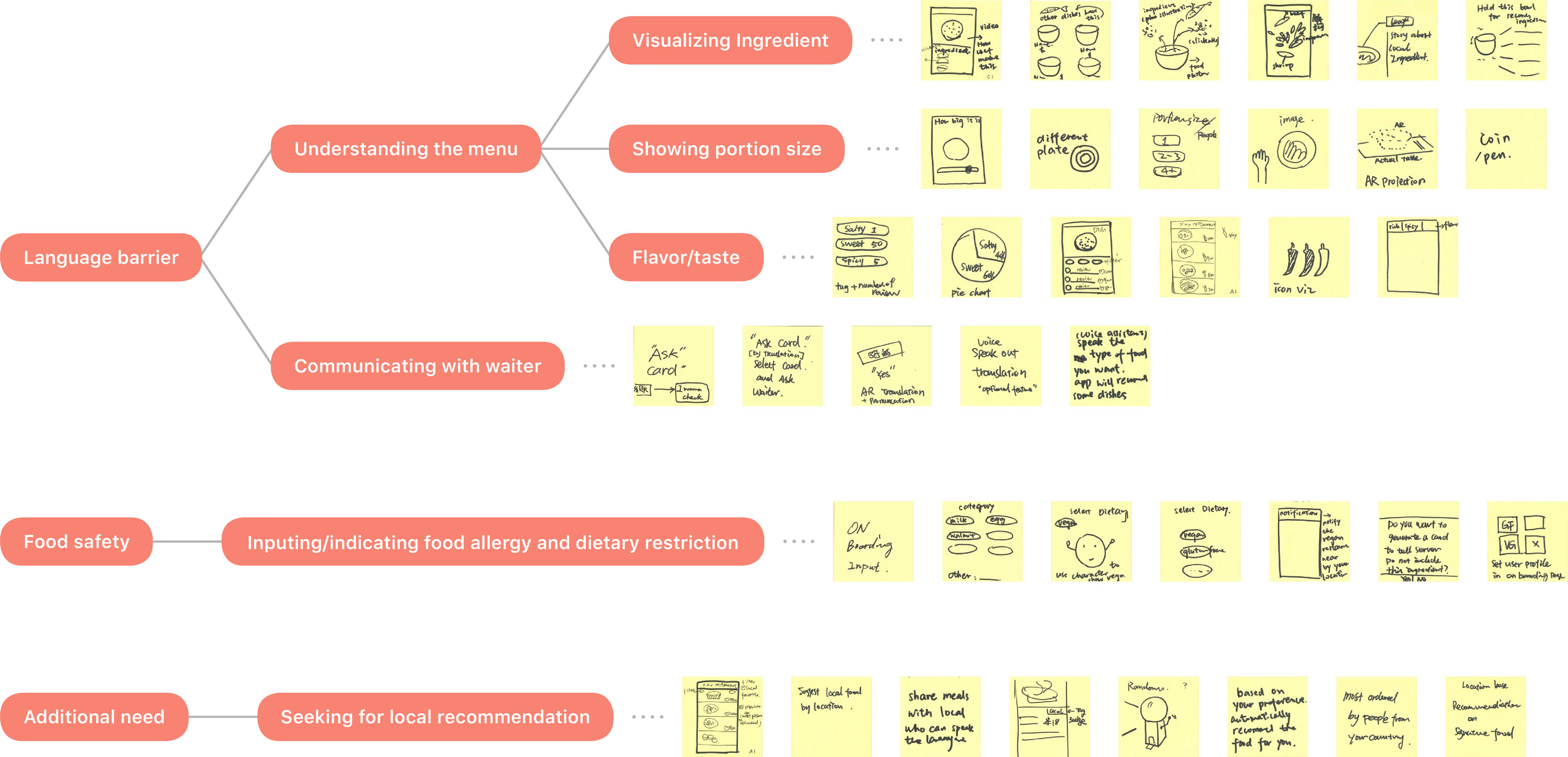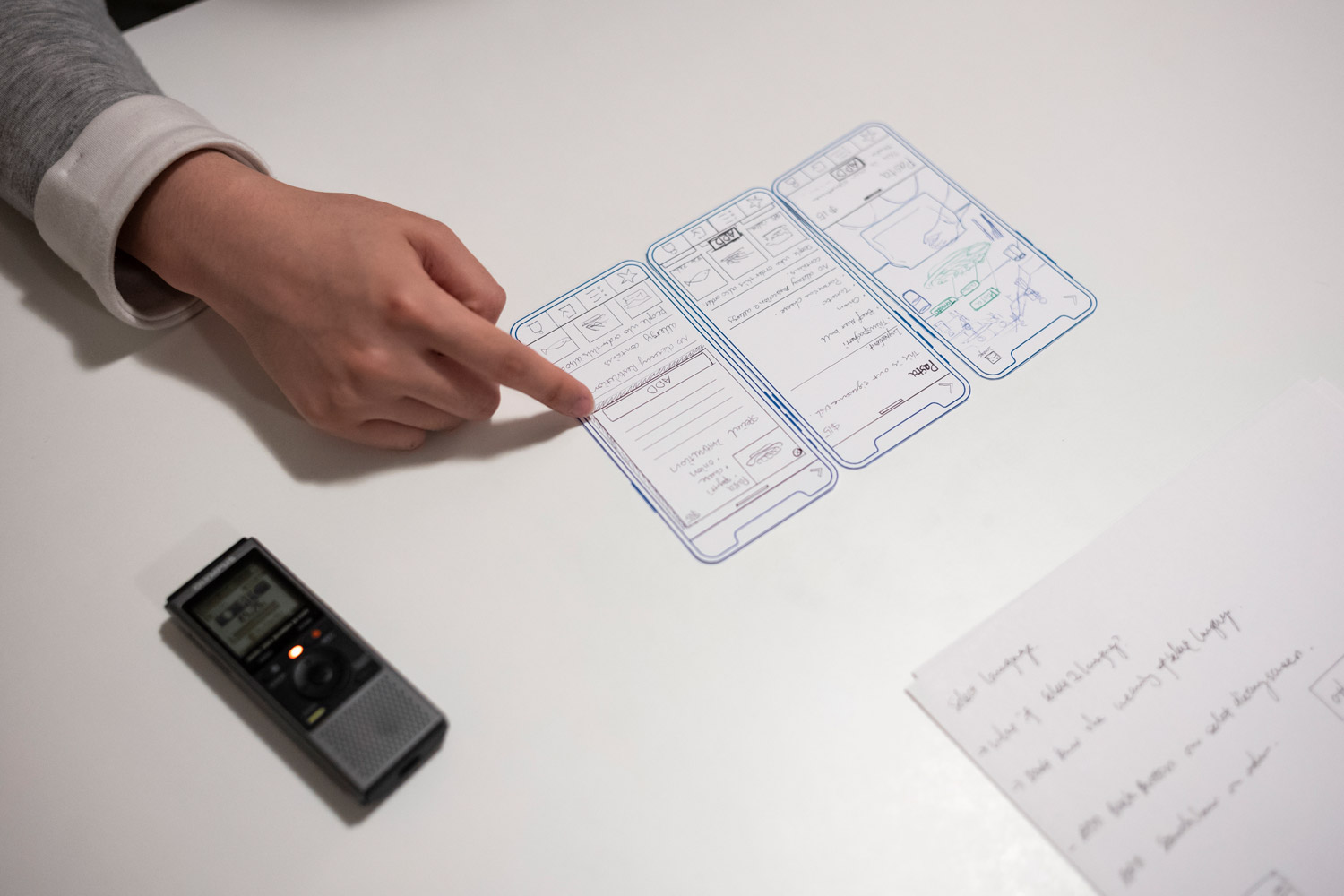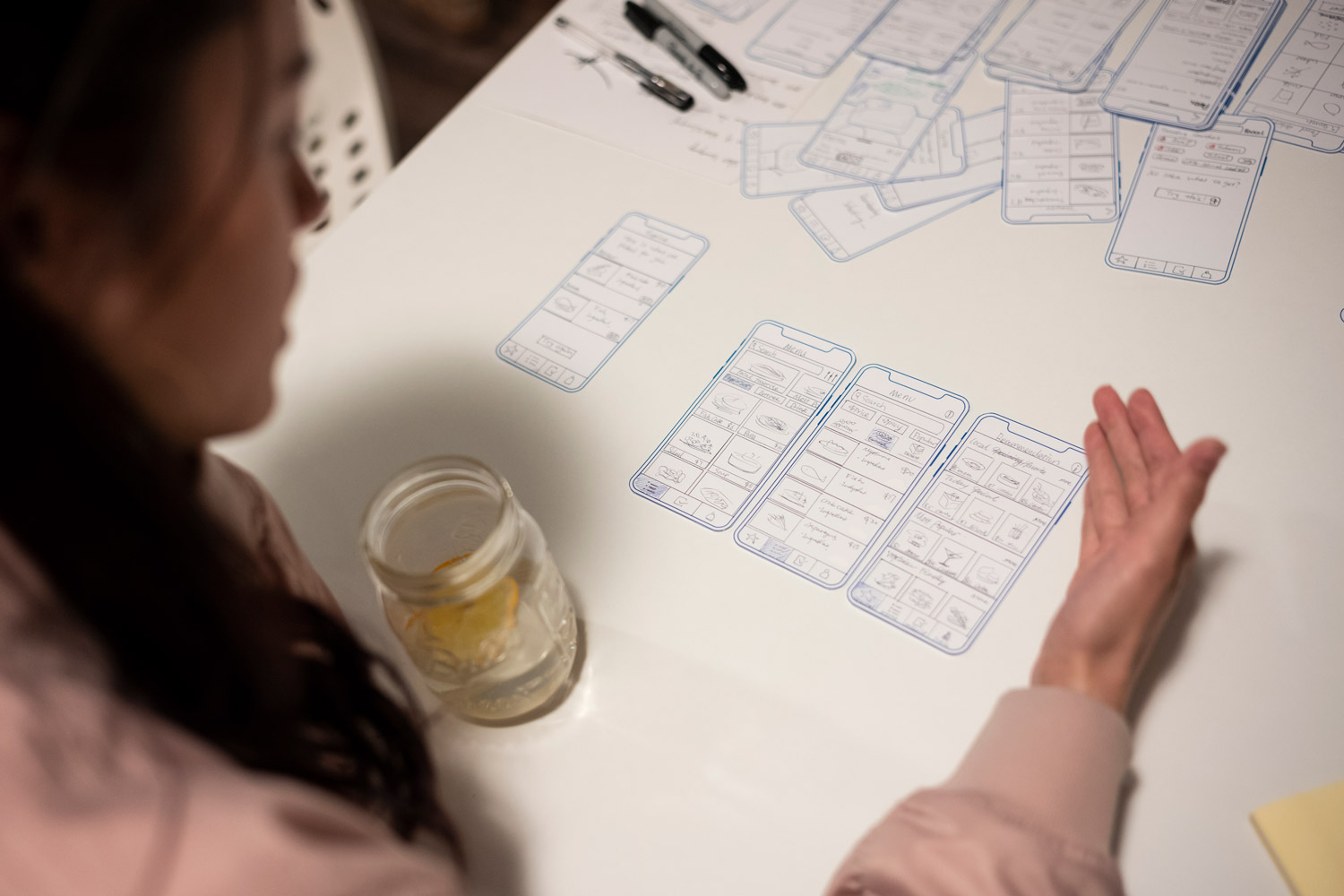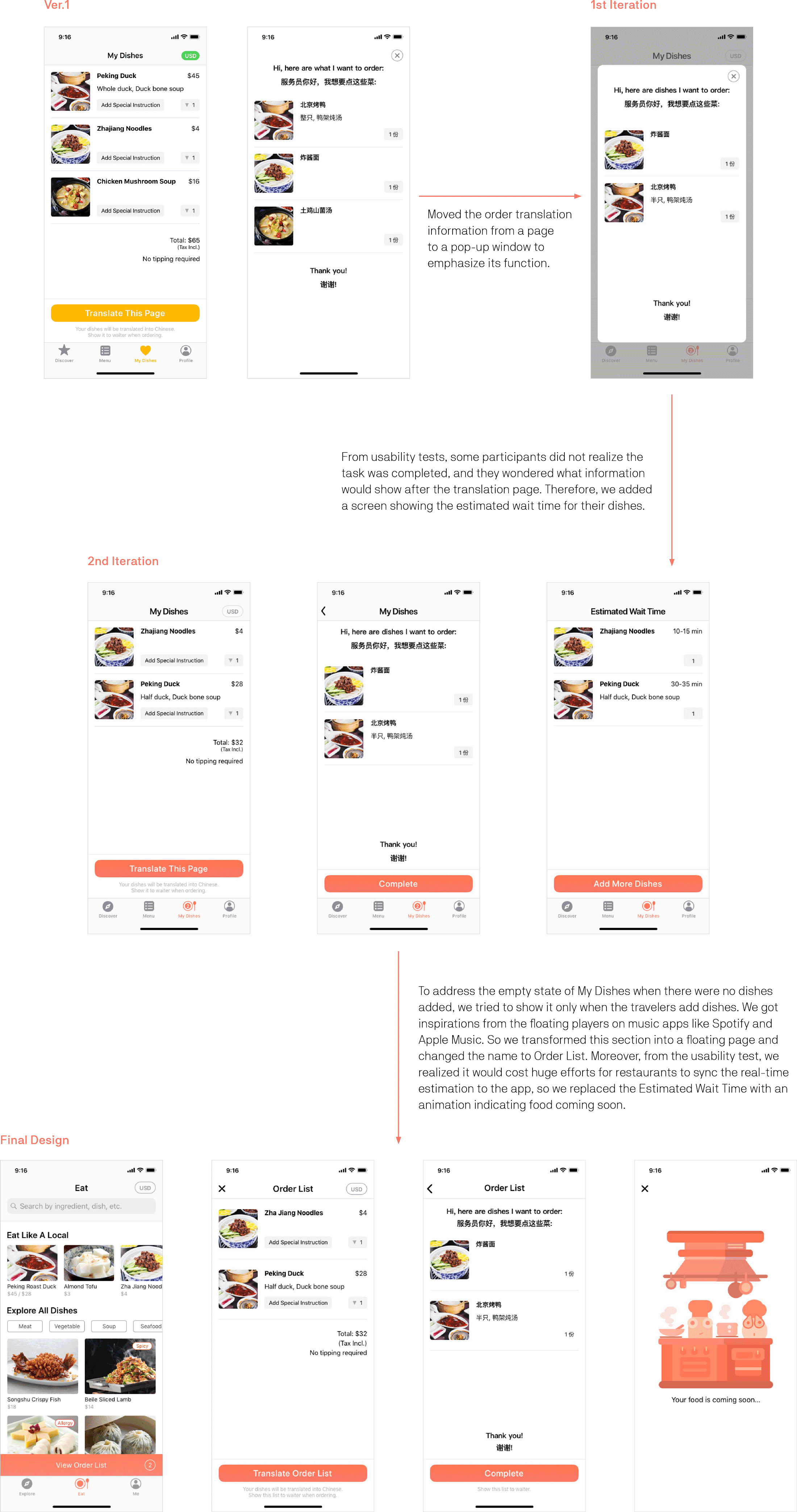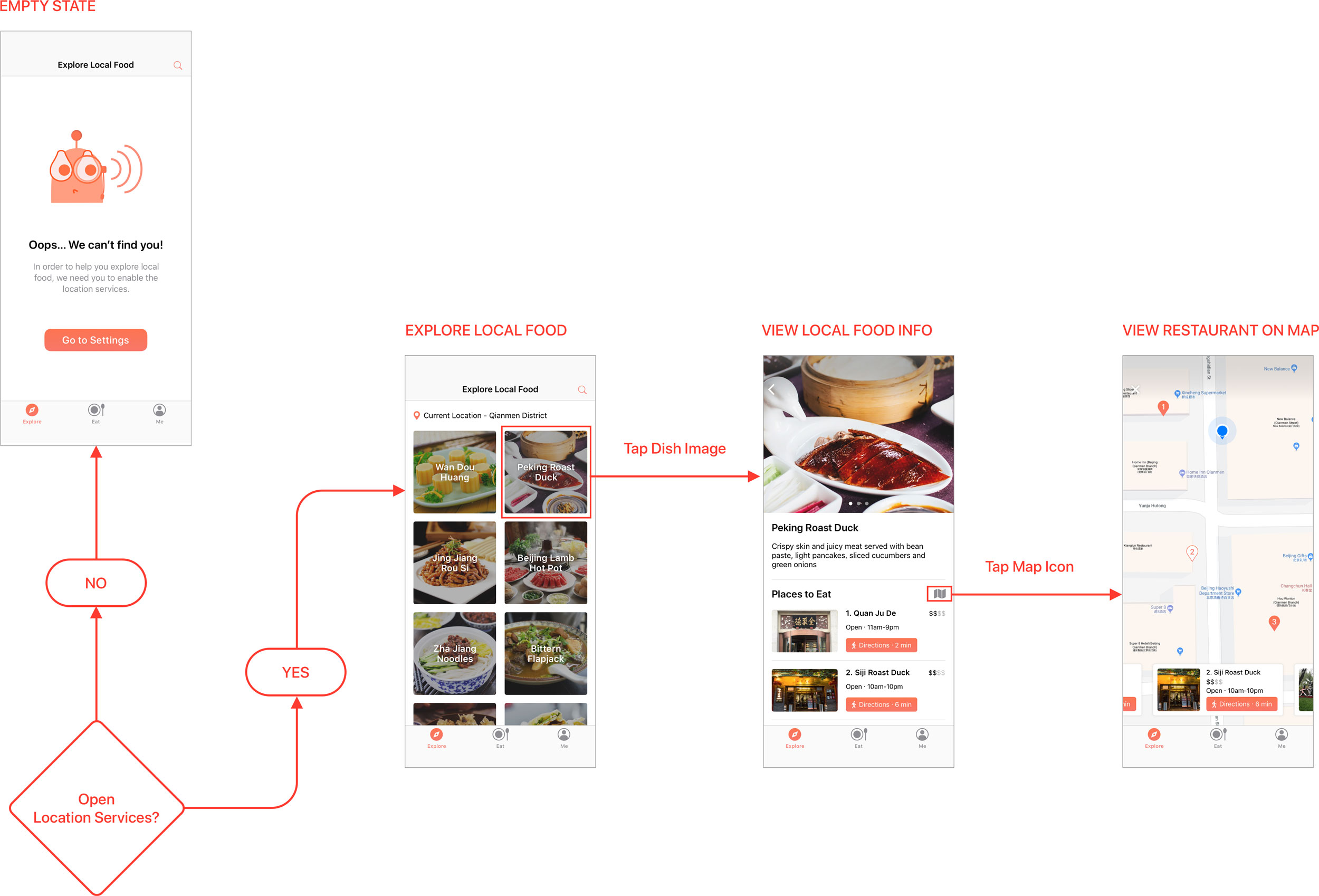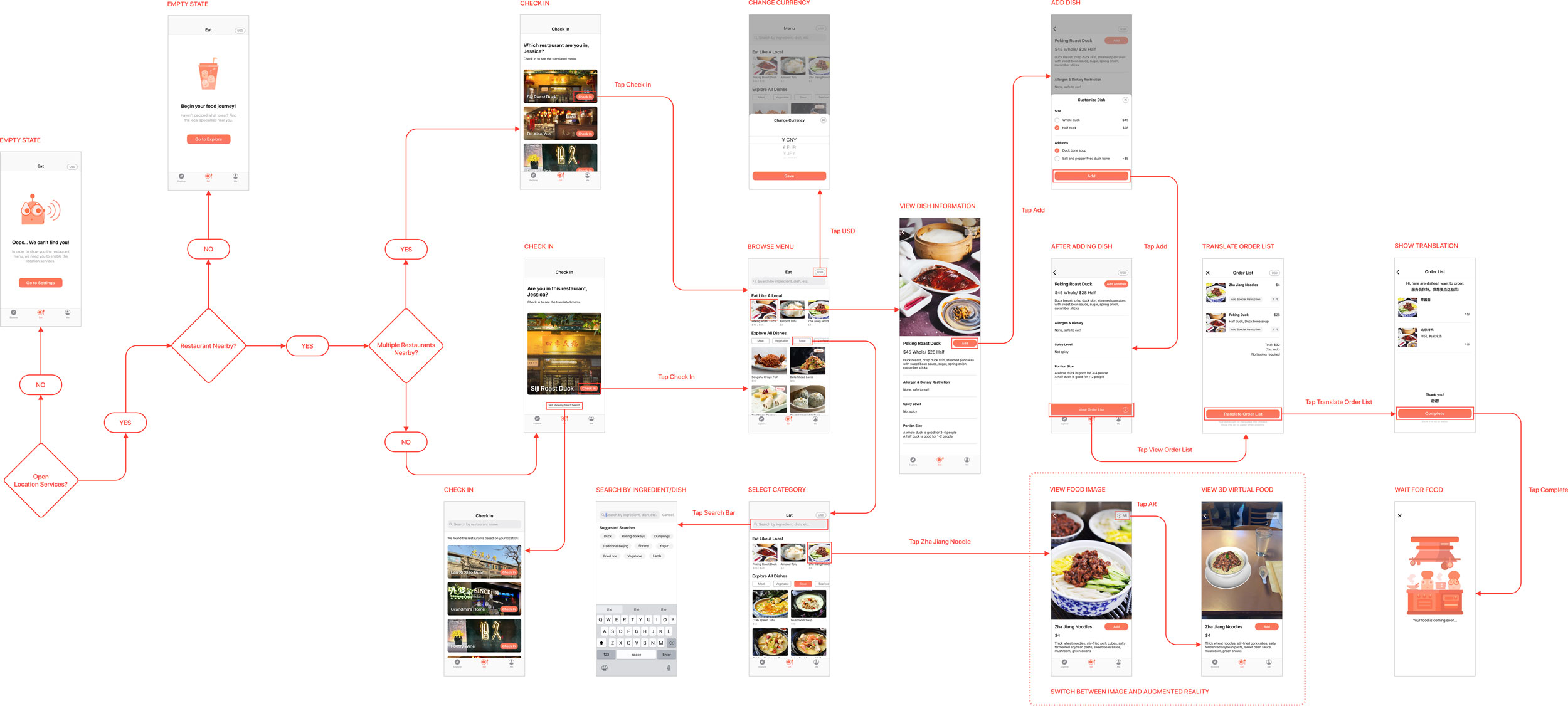We found:
1. Existing apps mainly cover the food discovering and restaurant planning stages, rather than the dining experience.
2. Translation tools don't always provide accurate translations.
3. Tourist menus provide limited language options.
We analyzed the major food and restaurant apps, focusing on whether they have solved the pain points we found from research and how. We also looked into apps’ pros and cons, and reviews from the App Store. We found existing apps mainly cover the food discovering and restaurant planning stages, rather than the dining experience. While some apps offer services catered to the dining experience, they tackle different problems and target groups.
See full competitive analysis >